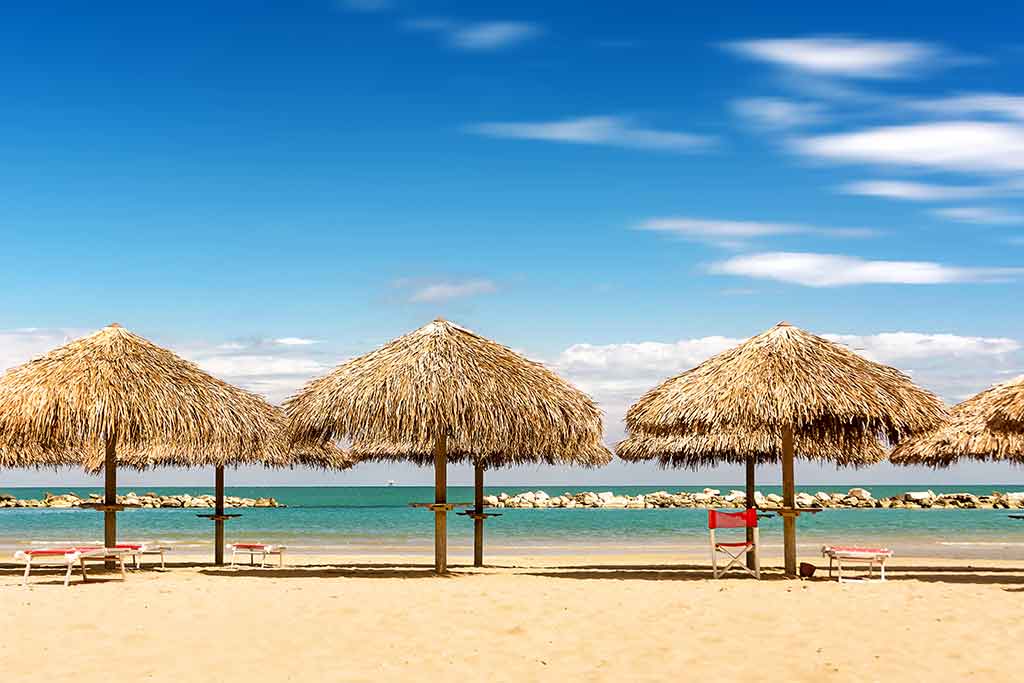
Rocca San Giovanni, which has been certified as one of the most beautiful villages in Italy, is a delightful medieval town located in Abruzzo in the province of Chieti; this small town, which extends for about twenty square kilometers, is perched on a & ; #39; height of about one hundred and sixty meters above sea level and is, among other things, a renowned seaside resort.
It's easy to fall in love with it at first sight: harvest and characteristic this village is extremely suggestive and picturesque. Sea, hill and historic center are the main ingredients that make Rocca San Giovanni a coveted tourist destination.
First let's see how to get there: Driving along the A14 (Adriatic motorway) coming from the North follow the direction & lt; Strong>Ancona and take the Val di Sangro exit; then follow the signs for Fossacesia and finally follow the provincial road 81 to Rocca San Giovanni; if come from the south on the Adriatic, follow the direction of Pescara; for the rest the indications are equivalent.
Below we propose a valid itinerary to best visit Rocca San Giovanni.
We suggest spending a day visiting the historic center. Surrounded by vineyards, orange groves and olive groves, the town still retains its ancient medieval walls, built in the aftermath of the looting of the Normans. The most important remains of this defensive structure, made with pebbles and stones of the area and almost totally destroyed by the earthquake of 1626, are located at the height of Via Abate Odorisio and culminate with the Filippini tower.
A visit to the church of St. Matthew the Apostle is a must, which is located in Piazza degli Eroi: realized in Romanesque style, it consists of three naves divided by pylons that support five arches in double ring. The facade of the church, which dates back to the late twenties of the last century and is made of sandstone blocks, has an arched central portal and is devoid of any ornament . Inside the church you can admire the statue of Our Lady of Graces, a Byzantine canvas of the fourteenth century depicting the Madonna and Child Jesus and the beautiful fresco “The Last Supper” by the Molise painter Amedeo Trivisonno (1904-1995). Saint Matthew the Apostle recalls, even if in a small size, the structure of the abbey of San Giovanni in Venere, located in the nearby Abruzzo municipality of Fossacesia.
Also of great interest is the Town Hall, started in the nineteenth century and rebuilt in 1926; it & egrave; characterized by a large porch, formed by arches with a semicircle vault. Passing an internal staircase leads to the famous ceremonies room. The board room is periodically set up for the exhibition of sculptures, paintings and engravings of great artistic interest.
Also worth mentioning is the presence in Rocca San Giovanni of a cultural center, located in Via Western near a palace nobleman of the last century that has been re-adapted to host exhibitions, exhibitions and any important cultural event. The structure, dedicated to the Abruzzo artist Arturo Colizzi, was strongly desired by the Administration and the citizens to act as a cultural and social glue, hosting conferences and conferences and returning to Rocca San Giovanni its former splendors.
It is also worth visiting the famous Casino Murri, an ancient farmhouse built between the eighteenth and the nineteenth century and that was recently refurbished. Featuring a rectangular plan, the casino also has a private chapel, probably built later than the building of the main structure. A wide two-ramp staircase leads to the first floor.
To spend a pleasant evening we recommend tasting the typical products, at the numerous gastronomic places in the village. Do not miss the famous palazzole, baked fish appetizer made with anchovies (or instead of sardines), bread crumb, garlic, parsley and oil; it is advisable to accompany them with a good glass of local wine.
After all, the village of Rocca San Giovanni is also known as a city of wine, being there are two famous wineries that produce Montepulciano d'Abruzzo and Trebbiano d'Abruzzo doc. Also important is the production of extra virgin olive oil, which is characterized by its fruity flavor and the characteristic golden green color.
This guide has been translated automatically through a third party service. Visititaly offers these automatic translations to help site visitors, however the automatic translations may contain inaccuracies, errors or inaccuracies. You can contact us to report inaccuracies or errors and we will check the translation.